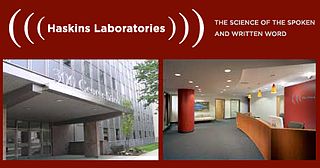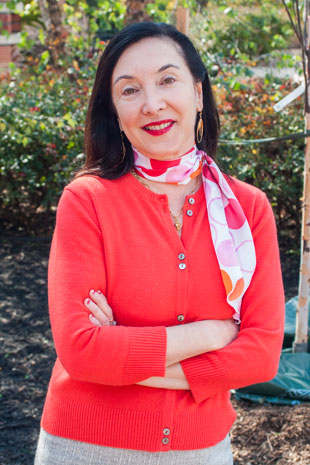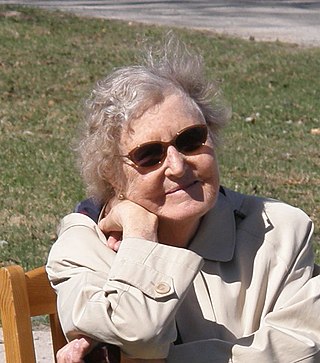Related Research Articles
The voiced alveolar lateral approximant is a type of consonantal sound used in many spoken languages. The symbol in the International Phonetic Alphabet that represents dental, alveolar, and postalveolar lateral approximants is ⟨l⟩, and the equivalent X-SAMPA symbol is l.

The voiced alveolo-palatal sibilant fricative is a type of consonantal sound, used in some spoken languages. The symbol in the International Phonetic Alphabet that represents this sound is ⟨ʑ⟩, and the equivalent X-SAMPA symbol is z\. It is the sibilant equivalent of the voiced palatal fricative.

The voiced velar implosive is a type of consonantal sound, used in some spoken languages. The symbol in the International Phonetic Alphabet that represents this sound is ⟨ɠ ⟩, and the equivalent X-SAMPA symbol is g_<. It is familiar to English speakers as the sound made when mimicking the 'gulping' of water.
Isochrony is the postulated rhythmic division of time into equal portions by a language. Rhythm is an aspect of prosody, others being intonation, stress, and tempo of speech.

The close central unrounded vowel, or high central unrounded vowel, is a type of vowel sound used in some languages. The symbol in the International Phonetic Alphabet that represents this sound is ⟨ɨ⟩, namely the lower-case letter i with a horizontal bar. Both the symbol and the sound are commonly referred to as barred i.
The close-mid front unrounded vowel, or high-mid front unrounded vowel, is a type of vowel sound, used in some spoken languages. The symbol in the International Phonetic Alphabet that represents this sound is ⟨e⟩.
A stop with no audible release, also known as an unreleased stop or an applosive, is a stop consonant with no release burst: no audible indication of the end of its occlusion (hold). In the International Phonetic Alphabet, lack of an audible release is denoted with an upper-right corner diacritic after the consonant letter, as in:, ,.

Janet Pierrehumbert is Professor of Language Modelling in the Oxford e-Research Centre at the University of Oxford and a senior research fellow of Trinity College, Oxford. She developed an intonational model which includes a grammar of intonation patterns and an explicit algorithm for calculating pitch contours in speech, as well as an account of intonational meaning. It has been widely influential in speech technology, psycholinguistics, and theories of language form and meaning. Pierrehumbert is also affiliated with the New Zealand Institute of Language Brain and Behaviour at the University of Canterbury.
Patricia Ann Keating is an American linguist and noted phonetician. She is distinguished research professor emeritus at UCLA.

Haskins Laboratories, Inc. is an independent 501(c) non-profit corporation, founded in 1935 and located in New Haven, Connecticut, since 1970. Haskins has formal affiliation agreements with both Yale University and the University of Connecticut; it remains fully independent, administratively and financially, of both Yale and UConn. Haskins is a multidisciplinary and international community of researchers that conducts basic research on spoken and written language. A guiding perspective of their research is to view speech and language as emerging from biological processes, including those of adaptation, response to stimuli, and conspecific interaction. Haskins Laboratories has a long history of technological and theoretical innovation, from creating systems of rules for speech synthesis and development of an early working prototype of a reading machine for the blind to developing the landmark concept of phonemic awareness as the critical preparation for learning to read an alphabetic writing system.
Ignatius G. Mattingly (1927–2004) was a prominent American linguist and speech scientist. Prior to his academic career, he was an analyst for the National Security Agency from 1955 to 1966. He was a Lecturer and then Professor of Linguistics at the University of Connecticut from 1966 to 1996 and a researcher at Haskins Laboratories from 1966 until his death in 2004. He is best known for his pioneering work on speech synthesis and reading and for his theoretical work on the motor theory of speech perception in conjunction with Alvin Liberman. He received his B.A. in English from Yale University in 1947, his M.A. in Linguistics from Harvard University in 1959, and his Ph.D. in English from Yale University in 1968.
Catherine Phebe Browman was an American linguist and speech scientist. She received her Ph.D. in linguistics from the University of California, Los Angeles (UCLA) in 1978. Browman was a research scientist at Bell Laboratories in New Jersey (1967–1972). While at Bell Laboratories, she was known for her work on speech synthesis using demisyllables. She later worked as researcher at Haskins Laboratories in New Haven, Connecticut (1982–1998). She was best known for developing, with Louis Goldstein, of the theory of articulatory phonology, a gesture-based approach to phonological and phonetic structure. The theoretical approach is incorporated in a computational model that generates speech from a gesturally-specified lexicon. Browman was made an honorary member of the Association for Laboratory Phonology.
Mary Esther Beckman is a Professor Emerita of Linguistics at the Ohio State University.
George Nickerson Clements was an American linguist specializing in phonology.

Laura-Ann Petitto is a cognitive neuroscientist and a developmental cognitive neuroscientist known for her research and scientific discoveries involving the language capacity of chimpanzees, the biological bases of language in humans, especially early language acquisition, early reading, and bilingualism, bilingual reading, and the bilingual brain. Significant scientific discoveries include the existence of linguistic babbling on the hands of deaf babies and the equivalent neural processing of signed and spoken languages in the human brain. She is recognized for her contributions to the creation of the new scientific discipline, called educational neuroscience. Petitto chaired a new undergraduate department at Dartmouth College, called "Educational Neuroscience and Human Development" (2002-2007), and was a Co-Principal Investigator in the National Science Foundation and Dartmouth's Science of Learning Center, called the "Center for Cognitive and Educational Neuroscience" (2004-2007). At Gallaudet University (2011–present), Petitto led a team in the creation of the first PhD in Educational Neuroscience program in the United States. Petitto is the Co-Principal Investigator as well as Science Director of the National Science Foundation and Gallaudet University’s Science of Learning Center, called the "Visual Language and Visual Learning Center (VL2)". Petitto is also founder and Scientific Director of the Brain and Language Laboratory for Neuroimaging (“BL2”) at Gallaudet University.
Jennifer Sandra Cole is a professor of linguistics and Director of the Prosody and Speech Dynamics Lab at Northwestern University. Her research uses experimental and computational methods to study the sound structure of language. She was the founding General Editor of Laboratory Phonology (2009–2015) and a founding member of the Association for Laboratory Phonology.
Laboratory phonology is an approach to phonology that emphasizes the synergy between phonological theory and scientific experiments, including laboratory studies of human speech and experiments on the acquisition and productivity of phonological patterns. The central goal of laboratory phonology is "gaining an understanding of the relationship between the cognitive and physical aspects of human speech" through the use of an interdisciplinary approach that promotes scholarly exchange across disciplines, bridging linguistics with psychology, electrical engineering, and computer science, and other fields. Although spoken speech has represented the major area of research, the investigation of sign languages and manual signs as encoding elements is also included in laboratory phonology. Important antecedents of the field include work by Kenneth N. Stevens and Gunnar Fant on the acoustic theory of speech production, Ilse Lehiste's work on prosody and intonation, and Peter Ladefoged's work on typological variation and methods for data capture. Current research in laboratory phonology draws heavily on the theories of metrical phonology and autosegmental phonology which are sought to be tested with help of experimental procedures, in laboratory settings, or through linguistic data collection at field sites, and though evaluation with statistical methods, such as exploratory data analysis.

Ilse Lehiste was an Estonian-born American linguist, author of many studies in phonetics.
Osamu Fujimura 藤村靖 was a Japanese physicist, phonetician and linguist, recognized as one of the pioneers of speech science. Fujimura was also known for his influential work in the diverse field of speech-related studies including acoustics, phonetics/phonology, instrumentation techniques, speech production mechanisms, and computational/theoretical linguistics.
References
- ↑ Beckman, M. and J. Kingston Introduction. In J. Kingston and M. Beckman (eds.) Papers in Laboratory Phonology I: Between the Grammar and the Physics of Speech. Cambridge: Cambridge University Press: 1–16.
- ↑ Cohn, Abigail. Phonology: An Appraisal of the Field in 2007, Presented at the Annual Meeting of the Linguistic Society of America. January 5, 2007. Anaheim, CA.